
Many times we change computers taking another one, although it works perfectly, but falls short for today’s software. Many times it stays around the house without knowing very well what to do with it. The case: if it is capable of being turned on, know that you can install quite updated software (and not an operating system with thirteen years of age and without technical support).
It is part of the magic of Linux-based OS: the kernel is very light, and it can work with very few resources (in terms of RAM and processor). It is enough to complement it with light but functional software. Let’s see 5 distributions of Linux ready to work on old computers but still have a war to give.
Top 10 Best Linux Distro For Old Laptop and Desktops
Do you have an old laptop that no longer works like it used to? With the correct Linux distribution, you can restore your old glory and enjoy it for a few more years as we told earlier. Hence, to help you get the most out of your old machine, we selected the 5 best Linux distributions for an old laptop.
Also Read: How to Create A Linux Bootable USB/Pendrive
Lubuntu

For many users, Linux is synonymous with Ubuntu. And many are already accustomed to the way of working in the distribution created by Canonical. Ubuntu, especially with Unity, is not made for old computers. But we have more flavors of this distribution, and one of them seems built thinking directly in this use.
Its name is Lubuntu. The initial L comes from LXDE, the desktop environment used by default. And in fact, the initial L of LXDE comes from Lightweight. It is a desktop environment designed primarily to function in modest hardware. As a window manager, it uses OpenBox, a word that you will read a lot in this article because it is one of the fundamental components of many of these distributions.
It also includes customized software and lighter than other alternatives. LXPanel, LXMusic, Leafpad and much more. Basically, this is a software that perhaps does not have all the features, but it does have the fundamentals which are enough for many of the users.
Anyway, as usual, nothing prevents us from replacing these applications for which we want. What do we prefer Metacity (the default window manager used by the GNOME 2 desktop environment) to OpenBox? Just install it with the preferred package manager that’s it.
Lubuntu requests 128MB of RAM and a Pentium II or Celeron of 1999 to work (in spite of being a processor released at the end of the last millennium, still works acceptably well if we remove from the equation the use of Flash and Web applications that make an intensive use of JavaScript). There are cases of users who have managed to run it successfully on computers with 64MB of RAM (although it requires 128MB to be installed). Moreover, do not use the Live CD, which does require 1GB of RAM, hence, simply install it using the alternate version.
Puppy Linux
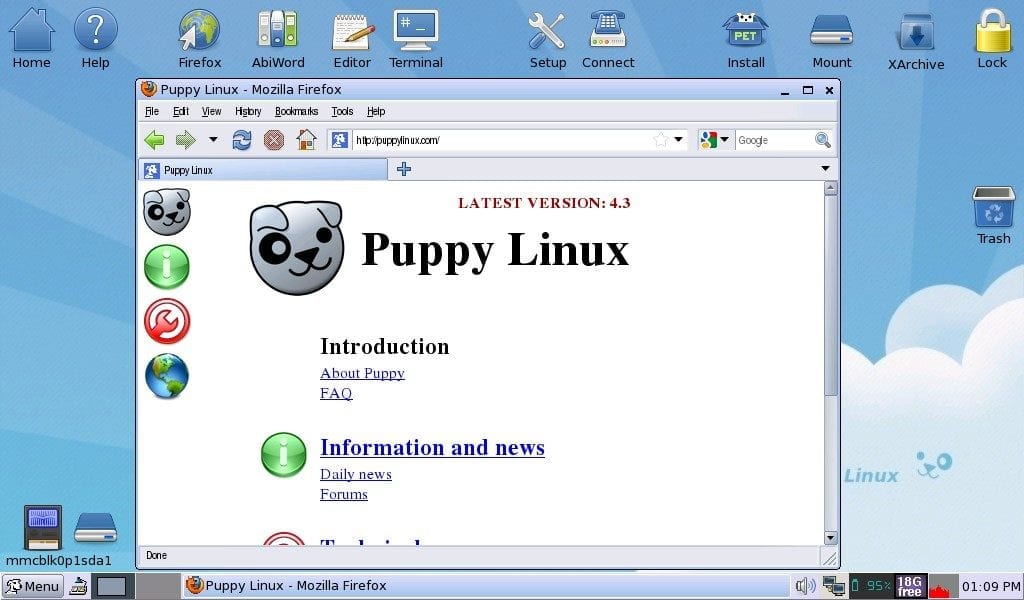
The name of this distribution already evokes it. Puppy Linux already indicates from the beginning that it is a very light distribution designed to work everywhere. It has several versions, although the most updated (January 20, 2019) is compatible with Slackware, and therefore carries the prefix Slacko.
Something quite striking is that by default it does not include an installation as we know it in other operating systems. This distribution starts directly to a desktop session ready to be used (although with some adjustment, such as the network connection that we are going to use). What we can save is the information of the session itself in the same unit from where we booted, or in a different one.
We can run it, for example, directly from a USB drive on computers that do not have a hard drive or we do not want to touch it, and it continues to run without excessive slowdowns. Even with a couple of modifications, we could start our system from a local network, and store all the information on a different computer.
As for its desktop environment, which is what the user interacts with on a daily basis, we find JWM (the J is from Joe, the name of its developer), used in modest equipment such as a Raspberry Pi. The minimum requirements, however, are somewhat higher than those of Lubuntu. We require a Pentium III or higher processor (should be clocked at 733MHz), as well as 256MB of RAM. Moreover, what is recommended is to have a 900MHz processor and 512MB of RAM.
Damn Small Linux
If we have a machine that is too old (of the first generation Pentium type, or even an i486), it may be worth sacrificing the latest software for having a functional machine. Damn Small Linux is the lightest distribution that we are going to talk about in this article, although at the expense of some functionality and the latest software versions.
We speak of an ISO that occupies just 50MB, ready to save on an optical disk the size of a business card. We can also store it in a Compact Flash card, installing it in saving mode. What’s really interesting: Damn Small Linux requires, at a minimum, just one Intel 486DX (or an Intel 486SX with coprocessor for floating point operations) with 16MB of RAM. If we get 128MB, we can run the entire operating system from the main memory.
As a graphical environment and window manager, JWM proposes to us, like Slacko Puppy Linux, although in previous versions it used by default Fluxbox. It includes somewhat old versions of the basic software. To get an idea: Firefox 2, and kernel 2.4.31. Although it is still functional for certain tasks, despite the fact that we will have to install many pieces of software manually, we might expect, like some version of OpenOffice. In 50MB we can not ask for compressed Debian media, of course.
SliTaz

Even lighter than we would expect, SliTaz proposes an ISO of just 40MB that allows us to start a fully functional system, or install it on a hard drive with barely 100MB of free space. It is a very light distribution and luckily brings us something more updated software (although we should not be surprised if we see still old versions by today’s standards). To contextualize: the latest version in development includes kernel 3.2.53.
They are currently testing the Release Candidate of SliTaz 5.0. The development, as we can see, is very much alive and as a desktop environment, it offers us OpenBox.
Minimum requirements? There is not much documentation about it, but a Pentium III with 256MB of RAM should work very smoothly, and with half of the main memory, it would be quite usable for less intensive tasks (the system takes for itself something less than 60MB).
Arch Linux

Arch Linux can be as compact and fast as you want. In fact, some Arch Linux users have replaced all graphical applications with their CLI equivalents to prove to themselves that beautiful icons and visual effects are overrated. Although it is unnecessary to say, an operating system without any graphical application can run on virtually anything, including your previous laptop as well.
With Arch Linux, you have the freedom to create the operating system that best suits your needs, but you must be prepared to work. In Arch Linux, the Wiki is your best friend, since it explains everything from the installation of the distribution to its configuration.
Peppermint
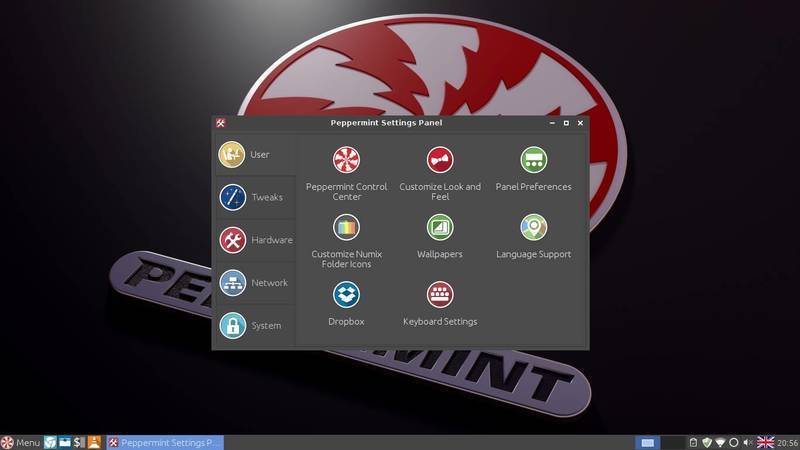
Peppermint is a cloud-based Linux distribution on the list which is known for its simplicity and ease of use. The great thing is that unlike all other Linux distribution, it doesn’t need high-end hardware. The lightweight Linux distribution is based on Ubuntu and it uses the LXDE desktop experience to give you a neat and smooth experience.
Technically, Peppermint requires 1GB of RAM and any processor based on Intel x86 architecture to run on a computer. It needs at least 4GB of available disk space to install on a computer.
#7 Linux Lite
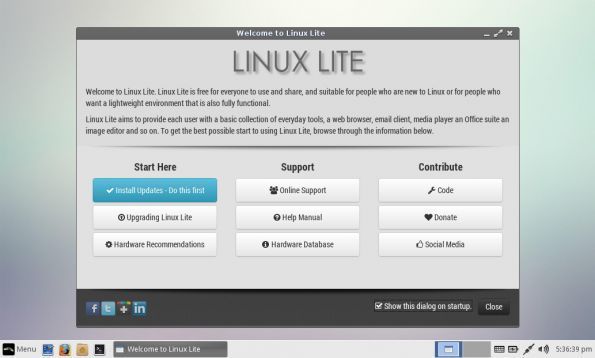
As the name of the Linux distro says, it’s a lightweight Linux distro that doesn’t need high-end hardware to run. The great thing about Linux Lite is that it has a clean interface and it easily runs on older computers. Another best thing is that Linux Lite has lots of pre-installed apps like Thunderbird, Dropbox, VLC Media Player, etc.
You won’t believe it, but Linux Lite requires less than 1GB of RAM to run and it works on any 700MHz processor. Apart from that, Linux Lite needs at least 5GB of free disk space to install on the computer.
#8 LXLE
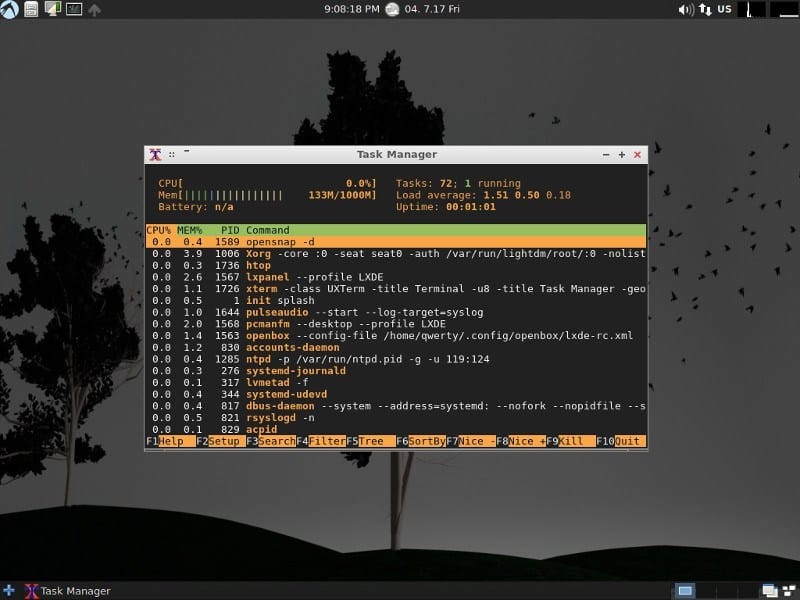
Well, if you have ever use Lubuntu and if you have loved it, then you will love LXLE for sure. This Linux distro is basically a revamped version of Lubuntu which had been listed above. You can expect similar features as of Lubuntu. If we talk about the software, the Linux distro packs lots of software that runs on low-end computers.
Talking about the minimum hardware requirements, LXLE needs less than 1GB of RAM and Pentium 3 processor. However, it needs at least 8GB of free disk space to install on a computer.
#9 CrunchBang++
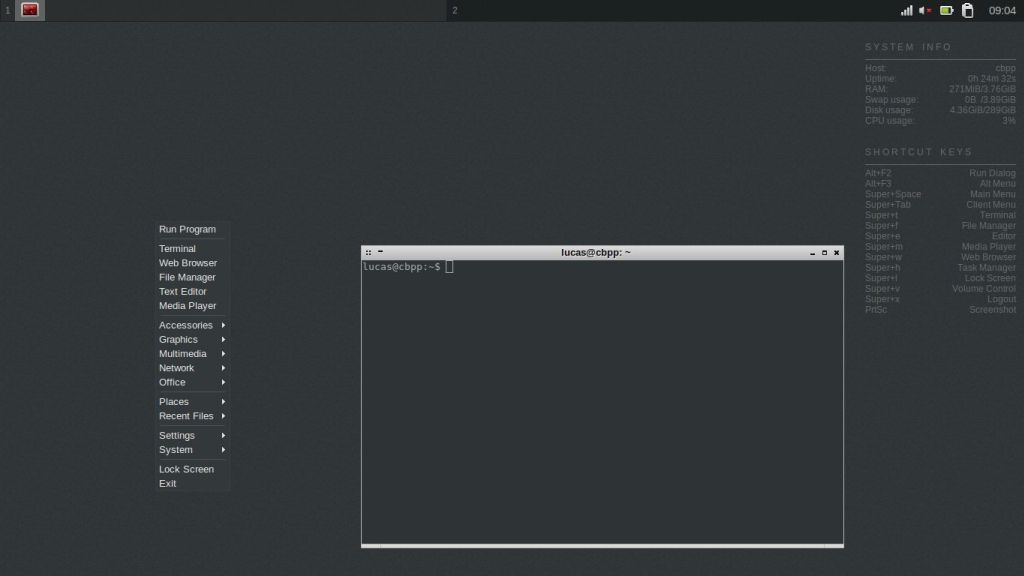
Remember the Crunchbang Linux which is always known for its simplicity? CrunchBang++ is a clone of that Linux Distro. Since its a clone of popular Linux distro Crunchban, you can expect similar features. The Linux distro is based on Debian 9 with a clean interface. It’s fast and you will definitely love to use it for sure.
If we talk about the minimum system requirement of CrunchBang++, the Linux distro needs less than 512MB of RAM and Pentium 4 processor to run.
#10 Bodhi Linux

Bodhi Linux is another best Lightweight Linux distro on the list which you can use on your old laptop or desktop. The operating system had been created by keeping simplicity at mind. It’s fast and it runs without using much memory.
If we talk about the minimum system requirement of Bodhi Linux, the Linux distribution needs at least 256MB of RAM and a processor with 1Ghz clock speed. It needs less than 4GB of disk space to install.
Conclusion
As we see, a computer is old is not an excuse to install relatively updated software and provide an extra time of life. We can take advantage of this kind of computer, for example, to be used as digital typewriters, to check email with a client such as Thunderbird, or to make light Internet browsing.
Also Read: Top 10 Best Linux Distros For Programming and Developers
It can also be coherent to use a lightweight distribution in a slightly more powerful device, above all in order to get the most out of our applications. This already depends on the skill of each one and the use that he/she will make for his/her machine.
So, do not hesitate to propose any options if you have, as we will love and appreciate that if you will do it. What do you think about this? Simply share all your views and thoughts in the comment section below.
The post Top 10 Best Linux Distro For Old Laptop and Desktops appeared first on Tech Viral.
from Tech Viral https://ift.tt/2P3LqtS

Comments
Post a Comment